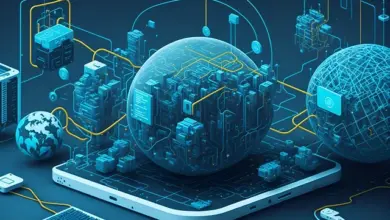Advances in Biotechnology: Transforming the Future of Science and Medicine

Introduction
Biotechnology, a rapidly evolving field that merges biology with technology, has witnessed extraordinary advancements over the past few decades. This interdisciplinary science encompasses the use of living organisms, biological systems, or derivatives thereof to develop products, tools, and techniques for improving human life and solving environmental and industrial challenges. From the development of recombinant DNA technology in the 1970s to the rise of CRISPR gene editing and synthetic biology, biotechnology continues to shape our understanding of life at a molecular level while providing solutions to some of the world’s most pressing issues.
Historical Background and Evolution
Biotechnology has its roots in traditional practices like fermentation, which ancient civilizations employed to create bread, wine, and cheese using yeast. However, modern biotechnology took a giant leap forward with the discovery of the structure of DNA by Watson and Crick in 1953. This discovery paved the way for the birth of molecular biology, culminating in groundbreaking techniques like recombinant DNA technology, which allowed scientists to manipulate genetic material in ways that were previously unimaginable.
The 1970s marked the true beginning of modern biotechnology with the development of recombinant DNA technology by Paul Berg, Herbert Boyer, and Stanley Cohen. This breakthrough enabled the cloning of genes and the creation of genetically modified organisms (GMOs), leading to the birth of the biotech industry. The commercialization of biotechnology was solidified with the production of human insulin by Genentech in 1982, using recombinant DNA technology in Escherichia coli bacteria, an event that marked the first approval of a biotech drug by the FDA.
Major Areas of Biotechnology
1. Genetic Engineering and CRISPR
One of the most significant advancements in biotechnology is genetic engineering, particularly the CRISPR-Cas9 gene-editing tool. Discovered in 2012 by Jennifer Doudna and Emmanuelle Charpentier, CRISPR (Clustered Regularly Interspaced Short Palindromic Repeats) allows scientists to precisely alter the genetic code of organisms by cutting and editing DNA at specific locations.
CRISPR has revolutionized fields such as agriculture, where it is used to create crops with enhanced resistance to pests, diseases, and environmental stresses. In medicine, CRISPR holds promise for curing genetic disorders like sickle cell anemia, cystic fibrosis, and even some cancers. The technology is also being explored for its potential in treating viral infections like HIV and COVID-19.
Despite its promise, CRISPR has sparked ethical debates regarding its use in germline editing, which could allow for the modification of human embryos. The possibility of creating “designer babies” with enhanced physical or intellectual traits raises complex moral and societal questions about the future of humanity.
2. Synthetic Biology
Synthetic biology is another cutting-edge area within biotechnology that involves designing and constructing new biological parts, devices, and systems, or re-engineering existing biological systems for useful purposes. By combining principles of engineering and biology, synthetic biology aims to create organisms with tailored functions that do not exist in nature.
The potential applications of synthetic biology are vast. Scientists have engineered bacteria to produce biofuels, biodegradable plastics, and even pharmaceuticals. One notable achievement in synthetic biology is the creation of synthetic life forms, such as the first self-replicating synthetic bacterial cell, created by Craig Venter’s team in 2010.
The ability to design and build biological systems from scratch opens up new possibilities for solving global challenges. For example, synthetic biology could lead to the development of more efficient ways to produce food, clean up environmental pollutants, or even terraform other planets for human habitation.
3. Biopharmaceuticals and Personalized Medicine
The field of biopharmaceuticals, which involves producing drugs from living organisms, has grown rapidly due to biotechnological advances. Biopharmaceuticals include monoclonal antibodies, vaccines, and gene therapies, many of which have transformed the treatment of diseases like cancer, autoimmune disorders, and infectious diseases.
One of the most exciting developments in this area is the advent of personalized medicine, a medical model that tailors treatment to the individual characteristics of each patient. Advances in genomics, proteomics, and bioinformatics have enabled the identification of specific genetic mutations or biomarkers associated with disease, allowing for more targeted and effective therapies.
For example, cancer treatment has been revolutionized by biotechnological innovations like CAR-T cell therapy, which involves genetically modifying a patient’s own immune cells to target and destroy cancer cells. Additionally, the development of mRNA vaccines for COVID-19, such as those produced by Pfizer-BioNTech and Moderna, represents a significant leap in biotechnology and demonstrates the potential of biopharmaceuticals to rapidly respond to global health crises.
4. Agricultural Biotechnology
Agricultural biotechnology has transformed the way we produce food, increasing crop yields, improving nutritional content, and reducing the need for chemical inputs like pesticides. Genetically modified crops, which are engineered to express traits like herbicide tolerance or insect resistance, have become a staple in many parts of the world.
Biotechnology also plays a crucial role in the development of climate-resilient crops. With the growing threat of climate change, scientists are using gene-editing technologies like CRISPR to create plants that can withstand drought, salinity, and extreme temperatures. Furthermore, advances in biotechnology are enabling the development of “super crops” that require less water and fertilizer, thus reducing the environmental impact of agriculture.
One of the most promising areas of agricultural biotechnology is the production of lab-grown meat. Cultured meat, produced by growing animal cells in a bioreactor, offers a sustainable alternative to traditional livestock farming, which is resource-intensive and contributes significantly to greenhouse gas emissions.
5. Environmental Biotechnology
Biotechnology is increasingly being used to address environmental challenges, such as pollution, waste management, and climate change. Bioremediation, for instance, utilizes microorganisms to clean up contaminated environments, including oil spills, heavy metal pollution, and plastic waste.
Genetically engineered microbes have been designed to break down pollutants more efficiently, and researchers are exploring the use of enzymes and bacteria to degrade plastic waste in oceans and landfills. Additionally, biotechnology plays a role in developing biofuels, which offer a renewable energy source and help reduce dependence on fossil fuels.
The integration of biotechnology into environmental conservation efforts is also making a difference in biodiversity preservation. Genetic tools are being used to revive endangered species, improve conservation strategies, and study ecosystems more thoroughly.
Challenges and Ethical Considerations
While the advancements in biotechnology offer immense potential, they also pose significant challenges and ethical dilemmas. The manipulation of life at the genetic level raises concerns about unintended consequences, such as the creation of new diseases or ecological imbalances due to the release of genetically modified organisms into the environment.
The use of biotechnology in agriculture, particularly GMOs, has sparked debates about food safety, environmental sustainability, and corporate control over the food supply. Public mistrust of genetically modified foods, especially in Europe, underscores the need for transparent regulation and communication about the safety and benefits of biotechnology.
Furthermore, the ethical implications of gene editing in humans, particularly germline editing, require careful consideration. The prospect of creating genetically modified humans raises questions about the societal impact of altering human traits, as well as the potential for widening social inequalities if such technologies become accessible only to the wealthy.
The Future of Biotechnology
The future of biotechnology is both exciting and unpredictable. As the field continues to evolve, we can expect even more transformative innovations that will reshape medicine, agriculture, and environmental management. Areas like regenerative medicine, which involves growing tissues and organs using stem cells, hold the potential to revolutionize healthcare by providing solutions to organ shortages and degenerative diseases.
In the coming years, advances in computational biology, artificial intelligence, and machine learning will likely accelerate the pace of discovery in biotechnology. The integration of these technologies into biotech research will enable more efficient drug development, gene editing, and the creation of synthetic organisms with enhanced capabilities.
Moreover, as biotechnology becomes more accessible through the rise of biohacking and citizen science, we may see a democratization of innovation, with individuals and small teams contributing to scientific advancements outside traditional academic or corporate settings.



